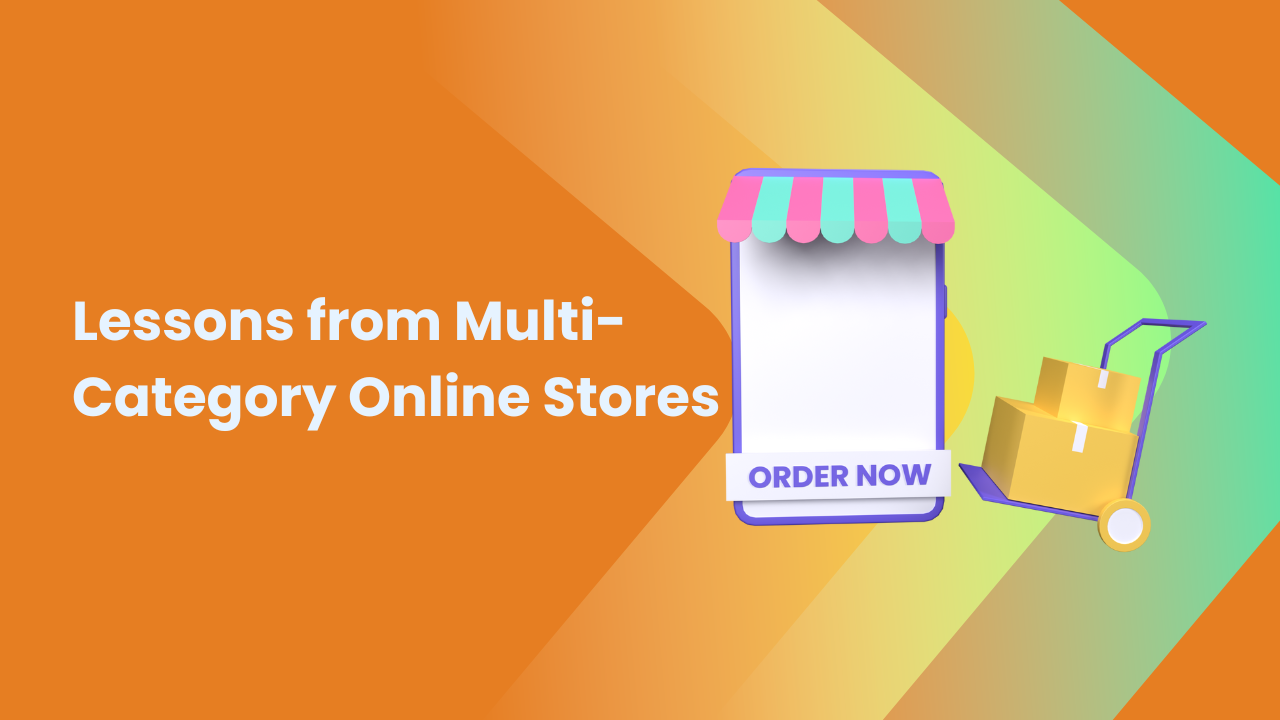Share this Article
The rapid expansion of the e-commerce industry in Nepal has transformed the way people shop and interact with brands. However, with the growing number of online stores, simply setting up an e-commerce platform isn’t enough. To succeed, Nepali e-commerce businesses need to stand out and capture the attention of their target audience. One effective strategy that can significantly elevate your online presence is localized content marketing.
Localized content marketing refers to the process of tailoring your marketing efforts to fit the unique language, culture, preferences, and behaviors of the local audience. In Nepal, where different regions have distinct languages, traditions, and consumer behavior, using localized content can help businesses connect with their customers on a deeper level.
This blog explores how Nepali e-commerce stores can benefit from localized content marketing. By the end of this article, you'll have a comprehensive understanding of how to effectively engage Nepali consumers and increase your online store’s conversions through culturally relevant content.
Why Localized Content Marketing is Essential for Nepali E-commerce Stores
Nepal is a diverse country with different regions, ethnicities, and languages. To make a significant impact in the Nepali e-commerce space, businesses must embrace the uniqueness of these factors. Here's why localized content marketing is crucial for Nepali e-commerce stores:
1. Cultural Relevance
Understanding and respecting the local culture plays a pivotal role in shaping consumer perceptions. In Nepal, there are various cultural nuances that shape purchasing behavior. From the importance of festivals to the different lifestyles across rural and urban areas, localizing content helps businesses engage in a more meaningful way.
2. Language Preferences
Nepali is the official language of Nepal, but many consumers speak regional dialects such as Maithili, Bhojpuri, or Newar. Offering your content in the local language ensures that your message reaches a broader audience, making your brand more relatable and accessible.
3. Building Trust and Loyalty
Consumers are more likely to trust businesses that cater to their language and culture. By crafting content that feels personal, relevant, and familiar, e-commerce businesses can build stronger relationships with their customers. This trust eventually leads to customer loyalty.
4. Improving Conversion Rates
Localized content can significantly boost conversion rates. When customers feel that the content speaks directly to them, their likelihood of completing a purchase increases. Whether it's through personalized product descriptions or culturally relevant campaigns, localized content can help drive sales.
Creating Localized Content for Nepali E-commerce Stores
Now that we understand the significance of localized content marketing, let's explore how Nepali e-commerce businesses can implement it effectively.
1. Conduct Thorough Research on Your Audience’s Culture
Nepal is a country of great diversity, and the needs and preferences of consumers can vary widely depending on their cultural background, geographical location, and lifestyle. For effective localization, businesses must understand the cultural nuances of their target market.
- Understand the Regional Diversity: Different regions of Nepal have unique languages, traditions, and consumer habits. For example, urban centers like Kathmandu may have different preferences compared to rural areas. By conducting thorough research, businesses can ensure that they understand the needs and desires of their specific audience.
- Know the Festivals and Traditions: Nepal is a country that celebrates various festivals throughout the year, each with its cultural significance. Festivals like Dashain, Tihar, Holi, and others create an opportunity for businesses to create festive campaigns that resonate with local consumers.
- Account for Regional Languages: While Nepali is the official language, many people in Nepal speak regional languages. Maithili is commonly spoken in the Terai, while Newar and Bhojpuri are spoken in specific regions. For businesses targeting different communities, it’s essential to offer content in their native languages.
2. Localize Your Website and Content
The first step in implementing localized content is making sure your website speaks the language of your audience. This involves more than just translation; it requires cultural adaptation to ensure the content is relevant and relatable.
- Website Translation: Translating your website into Nepali and any other relevant local languages is essential. You can also implement language toggle options to allow users to choose the language they are most comfortable with.
- Localized Product Descriptions: Product descriptions should not just be translated word for word. They must be adapted to suit the local context. This means focusing on features that resonate with the Nepali consumer. For instance, if you sell home appliances, highlight energy-efficient products, as sustainability is often a concern for local consumers.
- Use Local Imagery and Themes: Visual content plays a critical role in conveying your message. By using images that reflect Nepali culture and landscapes, businesses can make their online stores feel more familiar to local consumers. For example, during festivals like Dashain, showcasing traditional attire or family gatherings can create a strong connection.
3. Focus on Social Media Content Tailored for Nepali Audiences
Social media is a powerful tool for promoting e-commerce businesses, and localizing your social media presence is just as crucial as localizing your website.
- Post in Local Languages: Make your social media posts more relatable by using Nepali or regional languages such as Maithili, Bhojpuri, or Newar. This helps your audience feel more connected to your brand.
- Engage with Cultural Themes: Nepali social media users are highly active during festivals, holidays, and other cultural events. Capitalize on these moments by creating content that aligns with local traditions and sentiments. For instance, during Tihar, you could run campaigns featuring products associated with the festival like lighting, candles, and decorations.
- User-Generated Content: Encourage your customers to share their experiences using your products on social media. This content can be repurposed on your own channels, allowing you to showcase real-life use cases while also boosting customer engagement.
4. Local Influencer Marketing
In Nepal, influencer marketing is gaining traction, and local influencers play an important role in shaping consumer opinions. By collaborating with influencers who are already trusted by your target audience, you can increase brand visibility and drive more traffic to your website.
- Work with Local Influencers: Choose influencers who have strong ties to the community and whose values align with your brand. For example, if you sell eco-friendly products, partnering with a local environmental influencer could be beneficial.
- Micro-Influencers: While big-name influencers may offer massive exposure, don’t overlook micro-influencers. These influencers often have more engaged audiences, and their recommendations can appear more authentic.
- Localized Campaigns: Ensure that influencers tailor their content to suit the local language and cultural practices. Whether it’s through Instagram stories, blog posts, or YouTube videos, make sure the content feels authentic and relatable to the Nepali audience.
5. Leverage Local SEO for Better Discoverability
Search engine optimization (SEO) plays a crucial role in helping e-commerce businesses increase their visibility online. By optimizing your website and content for local search terms, you can ensure that your store ranks higher in search results, making it easier for potential customers to find you.
- Local Keywords: Research and use keywords that are commonly searched by Nepali consumers. Focus on long-tail keywords, which tend to have higher conversion rates, such as “best electronics store in Kathmandu” or “Nepali clothing online.”
- Optimize for Nepali Google: Ensure your website is optimized for Nepali search engines. Google Nepal has specific ranking factors, so your content needs to be tailored to meet local expectations.
- Google My Business: Make sure your business is listed on Google My Business, which is essential for any e-commerce business with a physical location. It helps increase your chances of appearing in local search results, especially when users search for businesses nearby.
6. Create Relevant Content for Local Audiences
Aside from your website, blog posts and articles can also be powerful tools for engaging with local customers. Your blog content should focus on topics that are highly relevant to Nepali consumers.
- Write About Local Trends and Issues: Create content that discusses trends, challenges, and interests that resonate with Nepali consumers. This could be anything from the growing interest in sustainable products to discussions around local fashion trends.
- Festivals and Local Events: Writing blog posts around local festivals like Dashain, Tihar, and Holi can provide valuable content for your audience. Offering tips, advice, or unique product offerings tied to these celebrations can help your store stand out.
- Local Success Stories: Feature testimonials and stories of local customers who have had positive experiences with your products. This adds authenticity to your brand and makes your content more relatable.
Conclusion: Embracing Localized Content Marketing for Success in Nepali E-commerce
In an increasingly competitive e-commerce landscape, localized content marketing can be the key to helping Nepali e-commerce stores succeed. By understanding the unique cultural and language preferences of your target market and creating content that speaks to their needs and desires, you can build a strong connection with customers and ultimately increase sales.
While implementing localized content marketing strategies may require additional effort and resources, the benefits are clear: enhanced customer loyalty, higher conversion rates, and a stronger online presence. By embracing cultural nuances and staying relevant to the Nepali market, e-commerce businesses in Nepal can ensure their growth and long-term success.
Categories:
E-commerce Tips & Tutorials
Tags:
LocalizedMarketingNepal
,
NepaliDigitalMarketing
,
MarketToNepal
,
SellOnlineNepal







